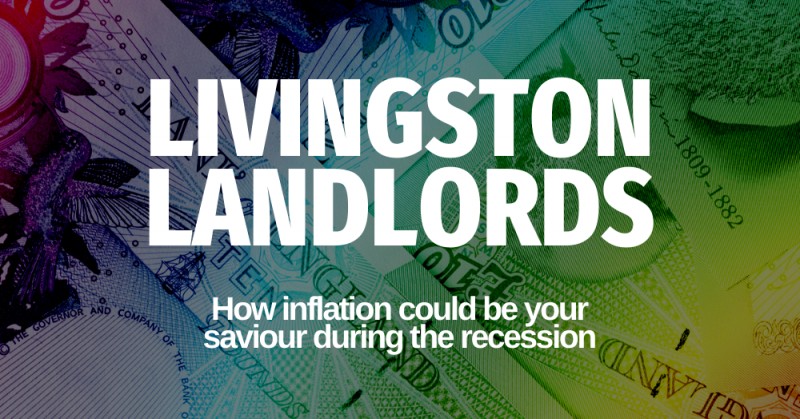
Some of you reading this will be old enough to remember the 1970s – the bell-bottom trousers, the huge collars, frayed jeans, disco glitter balls, maxi dresses, midi skirts but above everything else - HYPER-INFLATION.
With inflation currently standing at 11.1%, many of us envy the last few years when we have been lucky to experience sub 2% inflation.
But in the 1970s, the UK had proper and persistent double-digit inflation for seven of the ten years of that decade.
The average annual UK inflation rate for the 1970s was 12.3% per year, with prices rising by 25% in 1975 alone.
The inflation was caused by several things, including oil prices quadrupling in the 1973 Oil Crisis (sounds familiar, doesn't it?), powerful unions, a high level of growth and investment in the 1950s and 60s, meaning it was easier for the British economy to experience inflationary pressures in the 1970s and the property market then was not immune to these inflationary pressures.
The average Livingston house rose from £3,753 to £19,439 between the start of 1970 and the end of 1979.
That would be the equivalent of an average Livingston house going from today’s price of £234,141 to £1,212,651 in 2032.
The existing climate of rising prices (inflation) is affecting everyone, from filling up the car with petrol to doing the weekly ‘big shop’. Looking specifically at the buy-to-let market, Livingston landlords are suffering from rising costs and prices like everyone else, including a substantial increase in labour price inflation as skill shortages have pushed up the cost of using all the trades.
Other worries include whether tenants can pay their rent with the cost-of-living crisis. Also, there is a rise in interest rates which increases landlords' mortgage payments and professional fees, including accountants, and landlord insurance rates continue to climb.
So, is inflation all bad for Livingston landlords?
Most economists say that inflation is bad for the economy.
The absence of steady and stable prices makes consumers and businesses hold off making decisions to buy things, and when that happens, the economy stalls. Look at what happened in Germany in 1923, where you needed a carrier bag of cash to purchase a loaf of bread. Today, Zimbabwe has annual inflation of 269% a year, and Venezuela has 156% annual inflation, meaning their economies are on their uppers.
Thankfully, nobody is predicting British inflation will reach those levels.
Yet would it surprise you that inflation can be good news
for landlords?
Property has grown above the rate of inflation over the last 50 years. It means that your hard-earned savings invested in property will increase in value over and above the inflation rate, which will safeguard your wealth during these periods of high inflation.
However, knowing where we are on the economic cycle makes it easy to spot when house prices are lower in the short term (in real terms), thus buying yourself long-term 'extra' profit.
The average Livingston property today is worth £234,141. Roll the clock back to the autumn of 2007, and it was £157,843.
Quite a gain (and no profit) until you look at inflation.
It appears people who bought in 2007 have made money when they have lost it in 'real terms.
What do I mean by that? What exactly does ‘real terms’ mean?
Everyone knows that £100 today doesn't buy what £100 could have bought you ten years ago and much less than 20 years ago … that's the effect of inflation.
‘Real terms' means the price value after adjusting for inflation and expressed in constant Pound Sterling, reflecting buying power relative to another year. For example, the ‘actual’ price of a Mars bar in 2000 was 26p, yet its ‘real price’ (expressed in today's prices) is 74p. Why 74p? Because 74p is what a Mars Bar costs today.
What price in the past has the same spending power today? So, looking at the £157,843 average price for a Livingston house in autumn 2007 (as mentioned above), one would need £262,934 today to buy the same amount of ‘retail goods and services (e.g. cars, food, Mars Bars, holidays etc.). i.e. that is what 'real terms' mean.
That means even without any house price falls (which many are predicting),
average house prices in Livingston are £28,793 cheaper in ‘real terms’ today than in 2007.
Calculation: £262,934 (autumn 2007 Livingston house price expressed in today's spending power terms – i.e., in 'real terms' less £234,141 (today's average actual house price in Livingston) equals £28,793).






